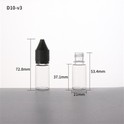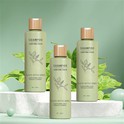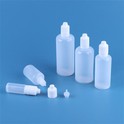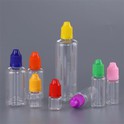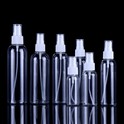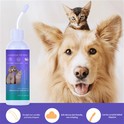There are several activities involved in creating and managing a cosmetic line, including creating formulas, investigating the materials, and testing the final product. The key element in the process is selecting the packaging of the product. It's a procedure that needs to be handled as soon as possible with many things in mind. Product packaging encompasses the exterior design and the choice of material, graphics, colors, and font size. These minor details increase the worth of the actual product.<br>
Packaging a product catches customers' eyes first and leaves a lasting impression.<br>
The type of materials you use for your packaging is also pertinent. The attractiveness of the packaging is not the matter here, but the sensitivity of the material to the product should be kept in mind. For instance, the packaging material must not react with the products inside.<br>
Analyzing the longevity or durability of the serums, and other beauty products is important.<br>
Both main and secondary packaging is referred to as cosmetic packaging. The cosmetic component is kept in its primary packaging, commonly known as cosmetic containers. It would be close to the cosmetic item. The outside covering of a single or more cosmetic containers is known as secondary packaging. All information required to define the product's safety must be on the principal package that distinguishes primary packaging from secondary packaging. In the absence of it, most of the necessary information may be available mostly on the secondary packaging.<br>
The identity of the distributors, the contents, the limit of storage, the apparent content, the standard (such as the registration or batch numbers), the warnings, and the application instructions also must be displayed on the cosmetic container. The distributor's address and details on the cosmetic's mechanism of action must also be included on the secondary packaging. There is no requirement for a product identification note on the supplementary packaging. This receptacle should always include all information when a cosmetic item is only packaged in one container.<br>
Metal
Metal cans are becoming increasingly popular in certain makeup and cosmetic industries for their goods, including exfoliants, liquid tints, eyebrows beauty products, and glosses. Your products seem lovely and vintage when made of metal. However, metal packaging must have a special coating to prevent rusting when used with items containing essential oils, so use caution. This also holds for metal lids. Most collapsible tubes are made of aluminum, but tin and lead also play important roles in cosmetic packaging.
Metals serve as unbreakable packaging for the best possible product protection. They can also protect products from moisture and high temperatures. In addition, metals are highly recyclable, which is advantageous for businesses seeking to project an environmentally friendly image.
Glass
Due to its biocompatibility and inertness, this substance is used in cosmetic products. Some reactive acids and essential oils should be packed in glass material. The glass's strong composition also protects it from corrosion, which is common in plastic packaging that reacts with the contents.
Using glass receptacles has the benefit of being beautiful. Glass packaging makes your product appear refined and upscale. Furthermore recyclable, they have a significantly smaller carbon imprint.
Jars, bottles, vials, or rollerball applicators based on your products can be selected for glass packaging. It can be clear, colored, or frosted. Labels on glass packaging can be a sticker on the exterior or printed right on it.
The production and shipping costs are the major drawbacks of using glass containers. Roetell.com delivers acknowledgment on the same.
PET or Polyethylene Terephthalate<br>
Polyethylene Terephthalate containers are transparent plastic bottles primarily used for beverages and cosmetics because they copy the clear appearance of glass. Over the years, due to its lightweight, low cost, and shatter rigidity, it has become very well-liked. Due to its ability to act as a shield between plastic and cosmetics, PET creates a superior cosmetics holder. This stops the product's chemicals from oxidizing plastic due to their reaction to the polymer. PET might be a great fit for you if your product contains alcohol, oleoresins, and other solvents. <br>
Polypropylene Plastic (PP)<br>
Propylene plastic, also widely recognized as PP, is used for packaging in cosmetic line manufacturers. PP is opaque and sturdier than previously mentioned plastic. For example, polypropylene Plastic is used in tubes of lotions and perfume packaging.
In addition to its flexibility and advantages for packing, polypropylene is waterproof and exceptionally resistant to moisture absorption. Due to its high flexural strength and semi-crystalline structure, it is also resistant to general wear and tear, making it perfect for products that must withstand greater amounts of physical stress. Additionally, it is resistant to germs, rot, and mildew. <br>
HDPE or High-density Polyethylene<br>
High-density Polyethylene is the most trusted packaging material used. It does have a rigid structure. It is Hypoallergenic, and is less inclined to leak contaminants into the ultimate article. Furthermore, it is highly biodegradable.<br>

